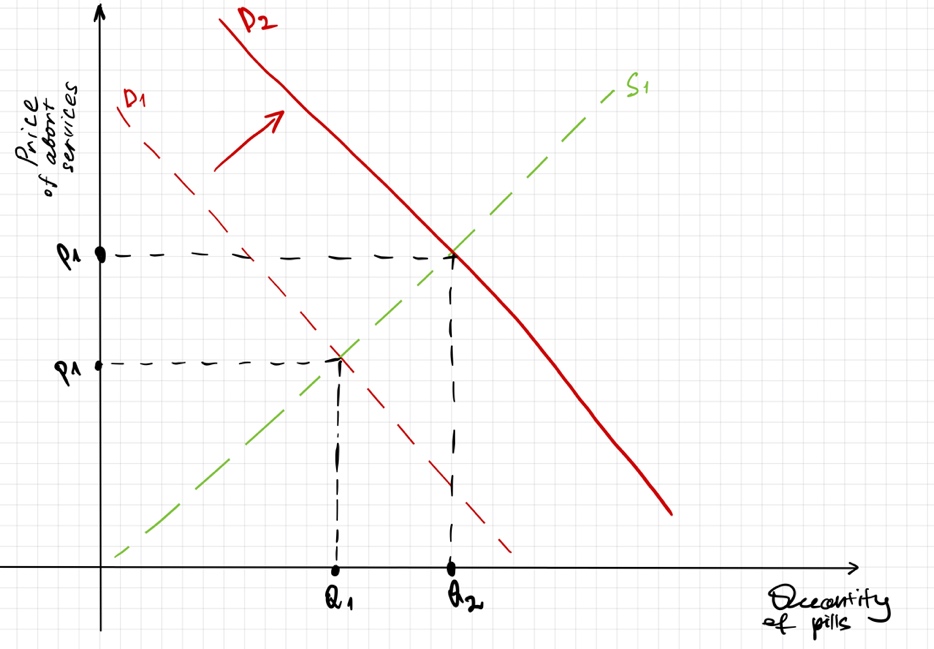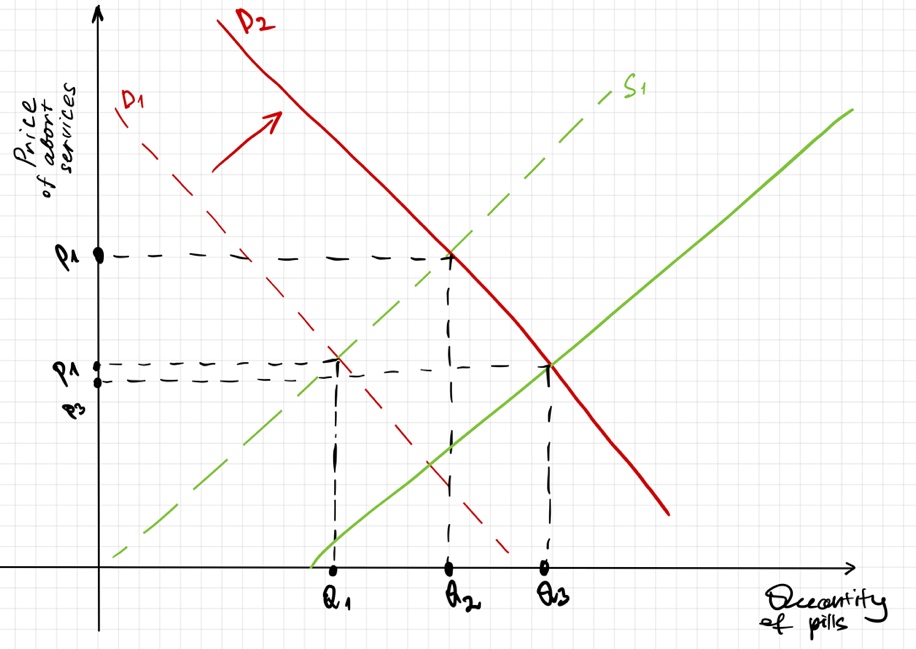Current Event News
One of the high-profile news stories of the past year, relevant to the U.S., has been the overhaul of abortion policy at the federal level and the transfer of decision-making authority to state government agencies. An article by Holpuch (2022) in The New York Times discusses the economic effect of the trend toward banning abortions in an increasing number of states, which leads to an increased demand for pharmaceuticals, birth control pills, and emergency abortion pills. The connection between the two variables seems understandable, as government bans on clinical abortions are forcing people to look for alternative ways to end unwanted pregnancies, so the population is turning to still-available options. Holpuch points to the clear advantages of this method of abortion, namely lower cost, non-invasiveness, and increased confidentiality, so demand for medical abortifacients is expected to increase in the face of government regulation of abortion policy.
Economic Impact of Current Event
The news article for comment should be examined from an economic perspective, allowing for a more in-depth analysis of what is written. Holpuch refers to the term “demand,” which is the number of goods or services that consumers are willing to purchase at a given price at a given time. Demand for medications to terminate unwanted pregnancies is increasing due to government restrictions.
In addition, the effect described in the article may be related to the term “elasticity,” which is defined as the extent to which consumers respond to changes in the price of a good or service or other factors that result in changes in the availability of a good or service. Elasticity applies to demand for birth control pills and emergency abortion pills because customers, according to Holpuch, are willing to pay more to get the product they want under government restrictions.
The pattern discussed by Holpuch can be demonstrated graphically using the supply and demand chart shown in Figure 1. The shaded lines show the original supply and demand curves before the implementation of the restriction: their intersection yielded equilibrium quantities and prices of abortion pills (Greenlaw & Shapiro, 2018). However, with the implementation of the abortion ban, the demand curve shifted to the right as more consumers wanted to purchase the product. The supply curve remained unchanged because producers may not have had time to respond to government regulation, meaning the quantity produced did not change.
The point of intersection of the two curves has shifted upward and to the right, indicating an increase in both the equilibrium price and the equilibrium quantity of abortion pills. This shift indicates that the demand for such pills has increased faster than the change in supply. In other words, people have become willing to pay more for drugs to buy them, and suppliers can provide more of them at a higher price. The following quotes from the Holpuch article demonstrate this effect: “Ms. Thomas said she had already been stocking up on Plan B…she bought even more on Friday” and “They want to know how many birth control pills they can stockpile.”

The public’s desire to stockpile abortion drugs before a potential ban on their sale is well described by the elasticity of demand for the pill. The demand for the medication is inelastic because the increase in sale price did not affect consumers’ desire to purchase the product (Greenlaw & Shapiro, 2018). This does not seem surprising, as with the banning of clinical abortion, the pill remains the only legal and safest option for emergency contraception.
It is fair to admit that Holpuch’s article does not report macroeconomic parameters, including equilibrium price or quantity changes. The unchanged supply model proposed earlier was based on the idea that producers could not respond quickly to government restrictions. Nevertheless, companies can often be pro-stock of goods produced and release them into sales when needed.
Under such conditions, as shown in Figure 2, the supply curve would shift to the right as more goods are released into circulation, and thus, the new equilibrium quantity would become higher and the new equilibrium price lower (Greenlaw & Shapiro, 2018). This fits well with theoretical expectations, as consumers would have easier access to medicines, resulting in a lower equilibrium market price. This is a favorable outcome for consumers because it will become easier for them to purchase the right product.

References
Greenlaw, S. A., & Shapiro, D. (2018). Principles of microeconomics 2e. OpenStax.
Holpuch, A. (2022). As states ban abortion, demand for birth control and abortion pills is rising. The New York Times. Web.